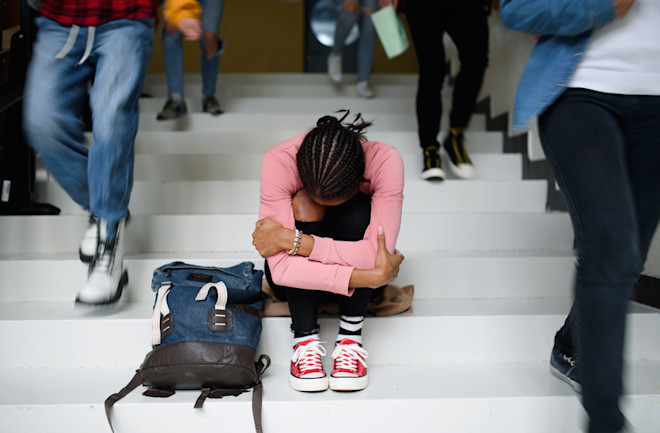The COVID-19 pandemic turned kids’ lives upside down — and parents aren’t ready to forgive the school officials, politicians, and members of the media who allowed unscientific school closures to drag on for years.
Schools across the US sent kids home and switched to remote learning in March 2020 and many didn’t start in person again until the 2022-2023 school year, resulting in an unprecedented amount of lost classroom time.
Daniel Kotzin, a father of two then-preschoolers picked up his family from San Francisco, where public schools were shut down while private schools remained open, and moved to Denver in 2021 so his son could start school in person.
“My wife, my son, my daughter and I got on a plane Sunday evening with the clothes on our back and rented an Airbnb in Denver so Oscar could attend kindergarten.”
They found a pre-school there for their daughter, Ruth, who had already been speaking both Spanish and English until a mask mandate upended her progress.
“As a result of the lockdowns and the mask policy, she had trouble learning either language instead of learning both languages,” he said.
Daniel believes strict policies in San Francisco — like a six foot distancing rule at playgrounds — permanently changed Ruth.
“My daughter is a naturally vivacious and outgoing child,” he said. “I think she has been permanently traumatized by the way people treated her during lockdowns… Several times grown-ups screamed at her that she was going to ‘kill their child’ by trying to talk to them.”
Author David Zweig doesn’t want the catastrophic policy failure that caused this lasting damage to get memory-holed. In his new book “An Abundance of Caution: American Schools, the Virus, and a Story of Bad Decisions,” out April 22nd, he set out to hold leaders and the media accountable.
“It’s hard to process how crazy it was that a healthy child was prevented from stepping foot in a school building for more than a year,” Zweig told The Post.
Zweig, an independent journalist based in upstate New York describes his new release as “an anatomy of [the] historic decision-making process” that led to 55 million K-12 students being shuttered at home, while schools in other countries remained open without major issue. --->READ MORE HERE
 |
| Image Credit: Ground Picture/Shutterstock |
The young used to report high happiness levels that declined into middle age before increasing into and throughout retirement. Now those levels are changing.
Mental health for U.S. children has declined before, during, and after the COVID-19 pandemic — a substantial break in a trend that has long shown this age group generally reports feelings of happiness and well-being, according to a report in the journal JAMA Pediatrics.
Children under 18 years reported a slow, steady climb in anxiety and depression from 2016 to 2022. In contrast, incidents of physical health problems, such as asthma, severe headache or migraine, and heart conditions declined or remained the same. The study was based on publicly available data from the National Survey of Children’s Health that were analyzed by researchers from Ann & Robert H. Lurie Children’s Hospital of Chicago.
“Our findings underscore the critical need to prioritize youth mental health, which continued to worsen even as we emerged from the pandemic,” Marie Hefferman, a researcher at Northwestern University’s medical school and an author of the paper, said in a press release. “Parents and schools need more support to be better equipped to help children suffering from anxiety or depression,” she said.
Youth Happiness in Decline
The percentage of U.S. children with anxiety jumped from 7.1 percent in 2016 to 10.6 percent in 2022 (the most recent year for which data was available), while depression increased from 3.2 percent to 4.6 percent in the same period. ADD/ADHD increased slightly, but did not meet a statistically significant threshold. Problems with behavior or conduct remained about the same.
The data revealed the opposite trajectory for some physical health issues. Asthma declined from 8.4 percent to 6.5 percent, and severe headaches or migraines went down from 3.5 percent to 2.6 percent. The percentage of children with heart conditions did not change over the study period. --->READ MORE HEREFollow links below to relevant/related stories and resources:
COVID-19 puts kids at increased risk of kidney, heart and gut problems
COVID Vaccine Shields Kids From Long COVID Risk
USA TODAY: Coronavirus Updates
WSJ: Coronavirus Live Updates
YAHOO NEWS: Coronavirus Live Updates
NEW YORK POST: Coronavirus The Latest
If you like what you see, please "Like" and/or Follow us on FACEBOOK here, GETTR here, and TWITTER here.


No comments:
Post a Comment